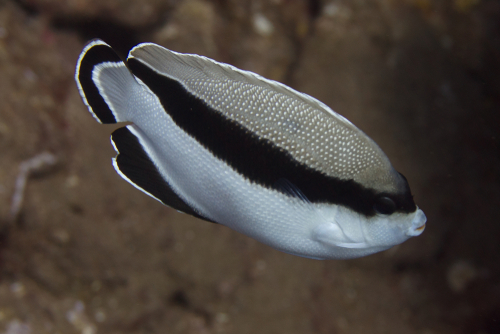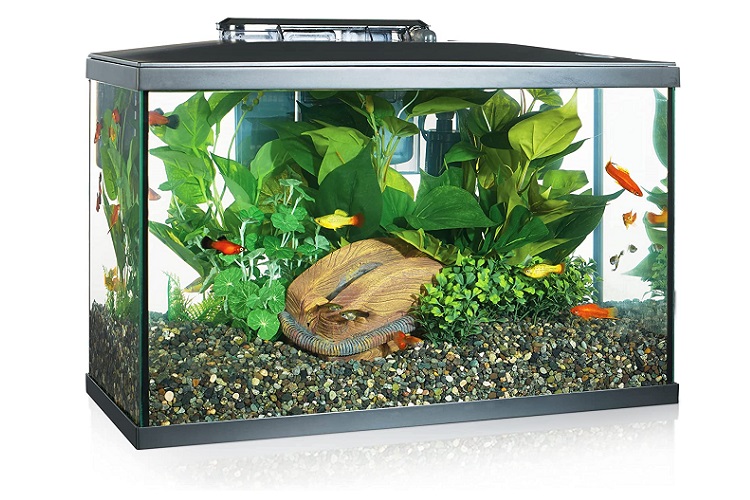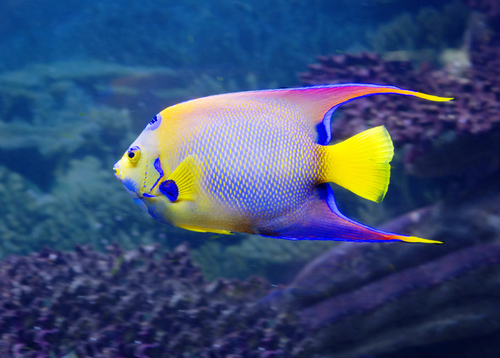When it comes to keeping fish as pets, there are a wide variety of choices to make. From bettas to goldfish, each type of fish has its benefits and drawbacks. One popular choice amongst pet buyers and aquarists is the majestic angelfish.
Keeping angelfish is quickly becoming a favorite for many fish enthusiasts; for a good reason, they’re beautiful creatures.
Angelfish are a popular type of freshwater tropical fish known for their bright colors and elegant fins. Angelfish belong to the family Cichlidae and are native to the Amazon River basin in South America.
However, these tropical fish have been introduced to other parts of the world and are now commonly kept as pets. But before adding one to your community tank, it’s essential to know a little about its lifespan and size.
This blog post will give you the scoop on angelfish so you can make the best decision for your aquarium. But before we answer the “how long do angelfish live” question, let us look at some other details.
Contents
How Big Do Angelfish Get?
On average, adult angelfish grow to be around 4 and 6 inches in length. However, some species of angelfish can reach 15 inches when fully mature.
Here is sample data showing the size difference between different species of angelfish.
| Species | Size at maturity |
| Peppermint | 3 inches |
| Altum | 4 to 6 inches |
| Black veil | 8 to 10 inches |
| Koi | 6 to 8 inches |
| Emperor | 12 to 15 inches |
| Flame | 6 inches |
| Dwarf | 4 inches |
| Swallowtail | 7 inches |
| Black lace | 8 to 10 inches |
| Veil | 6 inches |
| Koran | 15 inches |
| Marble | 6 inches |
| Zebra | 6 to 7 inches |
| Platinum | 6 inches |
While this is true, stressful conditions can have significant effects on the angelfish’s growth, although most fish sold as pets are only 6-8 inches long.
While angelfish are hardy fish, they do prefer a higher tank or aquarium because their bodies are naturally elongated and tall, allowing them to swim vertically.
An Overcrowded tank or aquarium does not provide enough space for them to swim comfortably in their natural vertical position.
Additionally, overcrowding can aggravate stress factors for the fish, leading to health issues. Overall, a taller aquarium similar to its natural habitat allows angelfish to thrive and exhibit their natural behavior. As such, it is essential to eliminate the stress factor.
Other popular posts:
Angelfish Lifespan

One of the more important details to note before filling your fish tank with any fish species is their life expectancy. So, how long do angelfish live?
The lifespan of angelfish, whether saltwater or freshwater angelfish, is between 10 and 12 years, but one can live up to 15 years. However, it all depends on several factors, such as the environment, size, and, most importantly, fish species.
The freshwater basins and salty oceans hold over a thousand species, and each angelfish species is capable of living up to an entire decade if the conditions are right.
In general, saltwater angelfish live significantly longer than freshwater species while also being larger size-wise (still maintaining healthy living conditions).
Both saltwater and freshwater angelfish take about 6 to 12 months to reach full size. Once mature enough to the point where their sexual maturity is on display, they dedicate the remainder of their energy pool toward achieving their maximum lifespan.
With proper care, your angel fish will live for many years. Proper care is essential to keeping them healthy and extending their lifespan.
Average Lifespan of Angelfish
While angelfish are capable of living a long life, 4 primary factors ultimately determine the average lifespan and growth: breed, diet, predator exposure, and water parameters.
While these factors are prevalent in freshwater angelfish, they are even more so in their marine counterpart.
While all species of angelfish are relatively easy to care for, contributing to their longevity, they, like other fish, are susceptible to a few diseases and health problems, so it’s important to keep an eye on them and consult a veterinarian if you notice anything amiss.
Angelfish are a delicate species and require a clean, well-maintained habitat with the correct water parameters. Putting angelfish in a tank whose chemical balance and salinity are wrong can affect the fish’s health rather quickly. They are also sensitive to changes in their environment.
Freshwater Angelfish Lifespan

Generally speaking, freshwater angelfish have a shorter lifespan than saltwater angelfish. They are also significantly smaller in size than their marine counterparts.
The difference in size and life expectancy primarily has to do more with the environmental factors rather than the species – freshwater angelfish are exposed to more predators while not having the spatial luxury which the ocean provides.
As a matter of fact, there are fewer genetic disparities between angelfish species. In fact, research highlights that the lack of genetic disparity extends even to color morphs, i.e, the different appearances angelfish tend to come in has no strong ties.
This goes to show that the majority of differences among angelfish are environment based, including their size, color, energy level, and lifespan. As such, the growing question becomes how to make sure your pet angelfish clocks its maximum age and, quite possibly, lives longer than that.
From an environmental standpoint, let us explore all the controllable factors, including the ones mentioned prior, that will let your angelfish live for as long as biologically possible.
1. Water Parameters
Although angelfish survive in waters outside their ideal demand, unhealthy water parameters will drastically have a negative effect on the health of your angelfish.
That being said, angelfish requires a water temperature and pH balance to thrive. As such, water temperature should be between 76 and 82 degrees, pH between 6.5 and 7.5, and water hardness between 5 o and 13 o GH.
Concerning the size of your angelfish tank, the ideal setup is to get anything capable of holding upwards of 55 gallons of water.
2. Dietary Needs
Feeding angelfish is relatively easy as they eat just about anything. In the wild, angelfish primarily snack on an endless supply of meat and plant products, including algae, tunicates, sponges, jellyfish, worms, insects, and other fish.
You can easily replicate this diet by feeding your pet angelfish high-quality food – commercial fish flakes and pellets work just fine – as they provide a plethora of minerals, vitamins, proteins, and other nutrients that accounts for healthy angelfish.
However, it is important to note that angelfish tend to go on hunger strikes when the water quality falls below the requirements. Still, adding a bit of variety to the food is just as important. For that, you can feed your angelfish with live, freeze-dried, and frozen foods.
Live food, for one, while hard to find, is a great supplement for your angelfish diet. Angelfish tend to enjoy feeder guppies, brine shrimps, mosquito larvae, blackworms, and blood worms, among others.
The nutrients these foods provide help create a more balanced diet similar to that of the wild, ultimately helping your fish grow to full size and maturity.
In conjunction, research affirms that feeding your angelfish diet based solely on live food enhances growth and life expectancy. A diet based solely on formulated food led to a 60 percent drop in the survival rate of young angelfish while increasing the death rate by as much as 2.5 times the average.
However, there are a few red flags when it comes to live-feeding angelfish. The reason for these warnings is that live foods tend to carry bacteria and parasites which can infect your fish and cause a plethora of severe health problems, not just for the angelfish, but for the rest of your aquarium fish
3. Tank Requirements

Setting up the perfect environment can improve angelfish longevity. For angelfish, in particular, you need a fish tank large enough to create enough hiding spaces for them.
Likewise, the addition of live plants, such as ferns, sword plants, moss, etc., makes for a healthier ecosystem. For starters, it prevents much-needed coverage for the angelfish while preventing algae growth by using nutrients produced by fish waste, uneaten food, and organic debris.
Additionally, they act as a natural filter, removing toxins from the water. They also produce oxygen during daylight hours, which is used by fish and helps stabilize pH. This not only improves water quality and makes the tank environment healthier for the fish, but it also makes the water more aesthetically pleasing.
Live plants also play an active role in the angelfish diet as they provide a renewable supply of nutritious snacks. This improves their overall diet, keeping them busy and out of contact with aggressive fish while protecting those they might bully. That way, their focus is on channeling their energy toward growing.
4. Tank Mates
A habit common with angelfish is their desire to shoal with angelfish of the same breed. According to studies centered on the behavioral processes of angelfish, wild, juvenile angelfish prefer to shoal with angelfish that looks like them.
This is because it helps them blend together and avoid being singled out by potential predators. While you may not need to worry about predators in your tank, you do have to be cautious to prevent selecting unsuitable tank mates.
While they are not an aggressive species, angelfish are active and territorial, and as such, it is not rare for angelfish to display semi-aggressive behavior, especially when kept in smaller confinements.
So, when selecting tank mates, it is important to go for less aggressive breeds as well as avoid selecting tiny breeds as they may end up being angelfish food.
5. Water pH
pH is one of the most important water parameters when it comes to keeping healthy fish. The recommended pH range for angelfish is 6.5-7.5, but they can tolerate a pH as low as 5.5 and as high as 8.0. If the pH in your tank is not within this range, it can cause stress and health problems for your angelfish, which can lead to a shortened lifespan.
If the pH in your tank is too low, your angelfish may experience problems with their gills, skin, and fins. They may also become less active and have trouble breeding. If the pH in your tank is too high, your angelfish may experience problems with its respiratory system, scales, and kidneys. They may also become less active and have trouble breeding.
Conversely, the Department of Anatomy, University of Technology, Poland, reveals that these hardy creatures can sustain their lives by manifesting several impressive feats including suppressing metabolic processes, increasing hemoglobin concentration, respiratory adaptability, and boosting breathing capabilities.
These feats allow adult angelfish to adapt and survive tough environmental conditions. Still, it is important to monitor the pH in your tank and make adjustments as needed to keep it within the recommended range since juvenile angelfish are unable to develop these adaptations fast enough to survive.
If you are not able to keep the pH in your tank within the recommended range, you may need to consider another type of fish that is better suited for your water conditions.
Figuring Out an Angelfish’s Age

Figuring out the age of a fish can be quite tricky. But there are several key markets that can help you ascertain your fish’s age. The biggest indicator of age is the size of the angelfish. Young angelfish tend to be smaller than older angelfish.
Another way to determine the age of an angelfish is by inspecting its growth rings. These rings are formed annually and can be seen on the fish’s scales.
Lastly is the color and shape of the fish. Younger fish are typically more brightly colored than older ones, as their color tends to fade as they age. They also have a more rounded body, while older angelfish appear angular.
Suppose you are noticing any of the following signs in your angelfish. In that case, their life expectancy is likely low:
Signs of Low Life Span Spectrum
There are many signs that indicate low life expectancy in angelfish. While many of these signs are visible, you still need to pay closer attention and invite a veterinarian to assess the situation and proffer solutions when necessary.
Here are some signs of low life expectancy in angelfish.
1. Lethargy
If your angelfish is not swimming around like normal and seems to be resting at the bottom of the tank more than usual, this could be a sign of a health issue that is causing them to tire easily.
2. Swelling
If your angelfish’s body appears to be swollen for no reason, this could be a sign they are experiencing some sort of angelfish virus.
3. Fin Rot
One of the most common diseases in angelfish is fin rot, which causes the fins to become infected and slowly decay.
4. Cloudy Eyes
Cloudy eyes can be a sign of many different things, including infection, parasites, or even old age. If you notice that your angel fish’s eyes are cloudy, it is best to have them checked out by a vet.
Frequently Asked Questions
Here are some frequently asked questions regarding angelfish and angelfish lifespan.
How Long Can Angelfish Go Without Food?
Freshwater angelfish can live for up to 3 days without food easily. However, angelfish can live for as much as 2 weeks without food, but this greatly depends on the angel fish’s age, size, and health status.
Do Angelfish Mate for Life?
Breeding angelfish form close, monogamous pairs early on in life. These pairs do everything together. However, albeit quite rare, angelfish do swap partners.
What Makes up the Angelfish Diet?
Angelfish are omnivores, meaning they are capable of eating live food as well as plants. If you are unsure about what to feed your fish, try to replicate food found in their natural habitats.
What Water Conditions Do Angelfish Thrive In?
The fish can grow in very low acidic to very low alkaline water conditions of between 6 and 8 pH.
Which lives longer between the male and female angelfish?
There is no definitive evidence that suggests male angelfish live longer than female angelfish or vice versa. As long as the conditions are right and you practice proper angelfish care, both male and female angelfish can live for many years.

Ian Sterling, founder of Fishlab.com, began his aquarium journey over 30 years ago, driven by a deep fascination for fish and their diverse personalities. His website, Fishlab.com, is dedicated to making fishkeeping accessible and enjoyable, offering beginner-friendly guidance, expert insights, and a community for aquarists to connect and share experiences.


